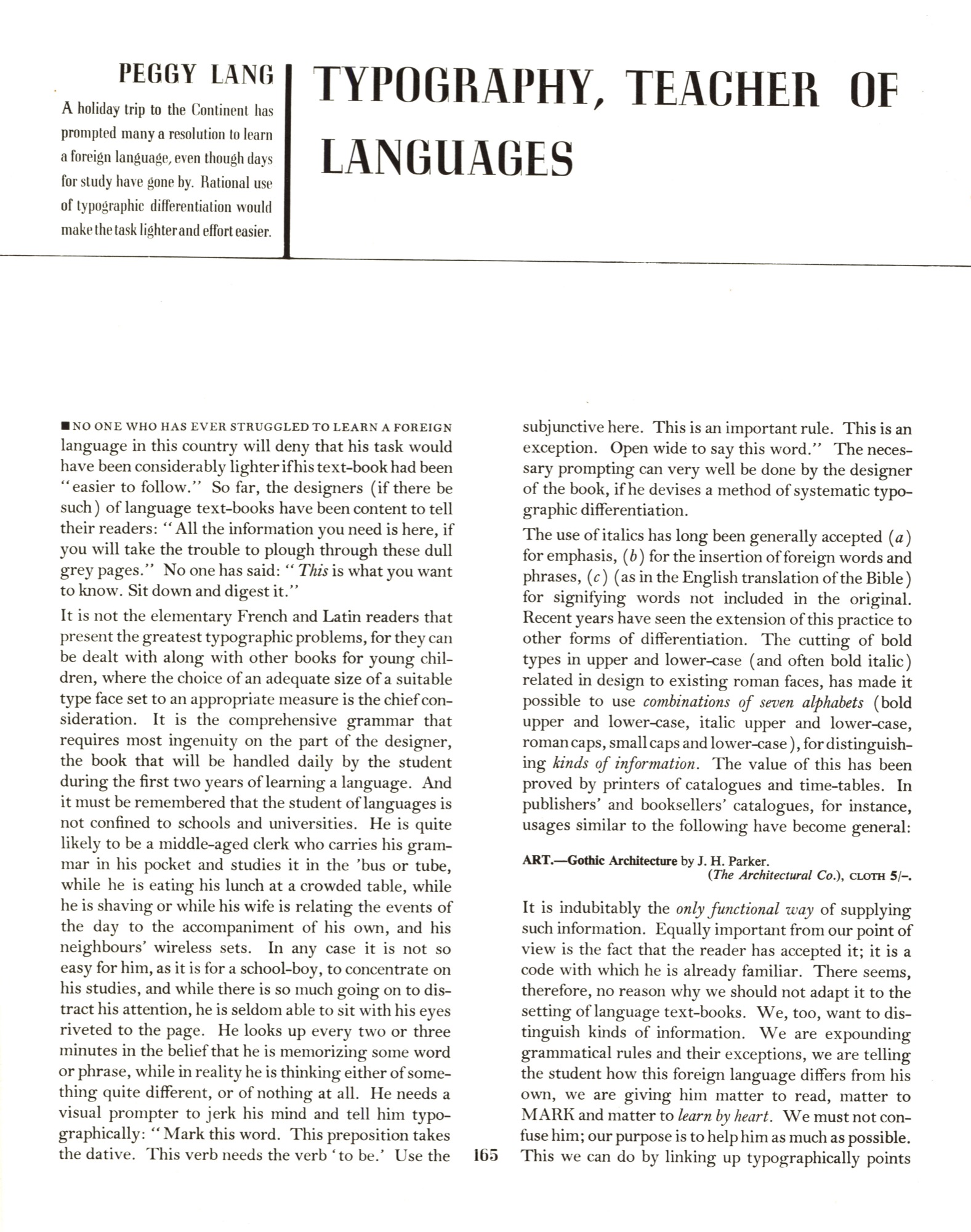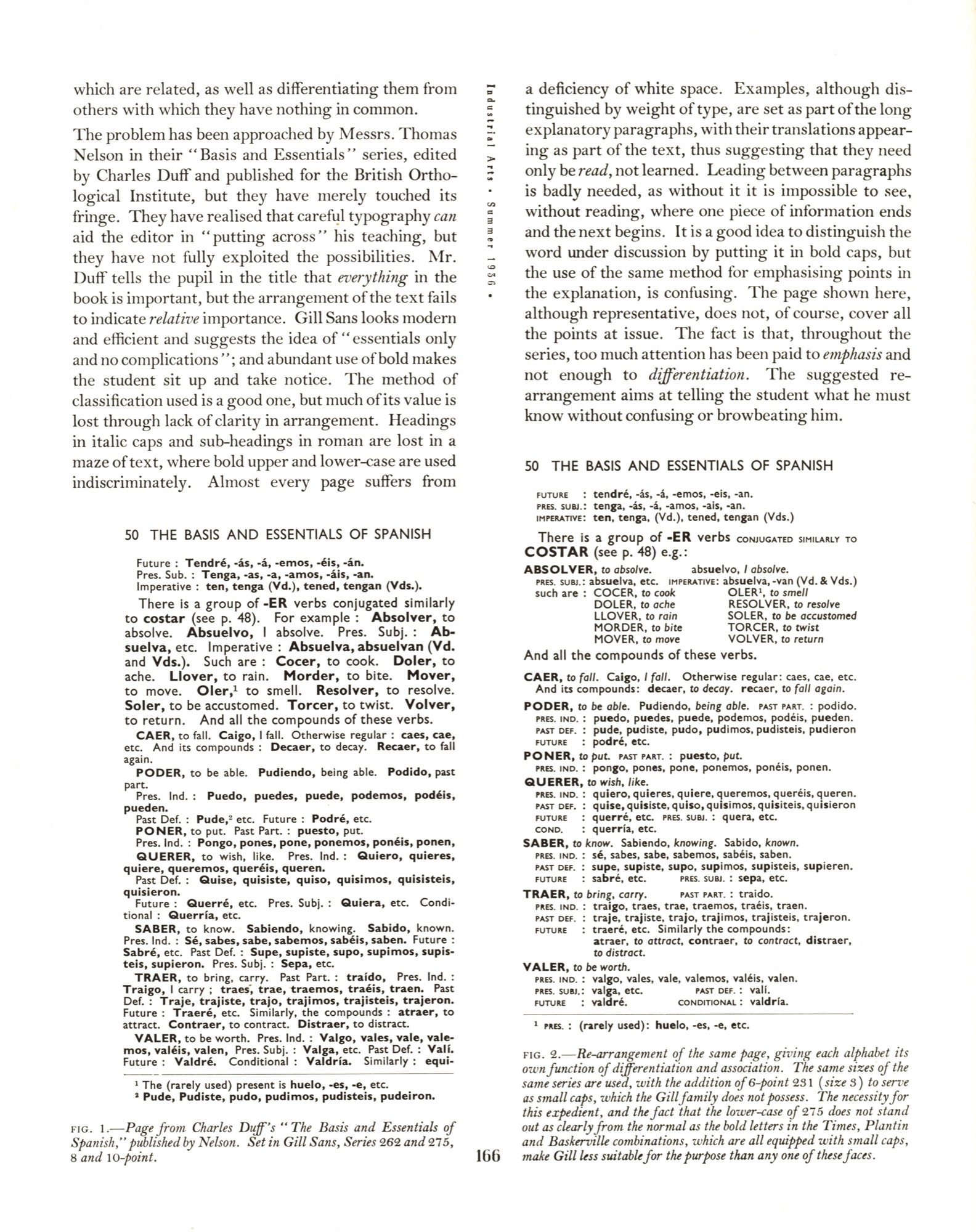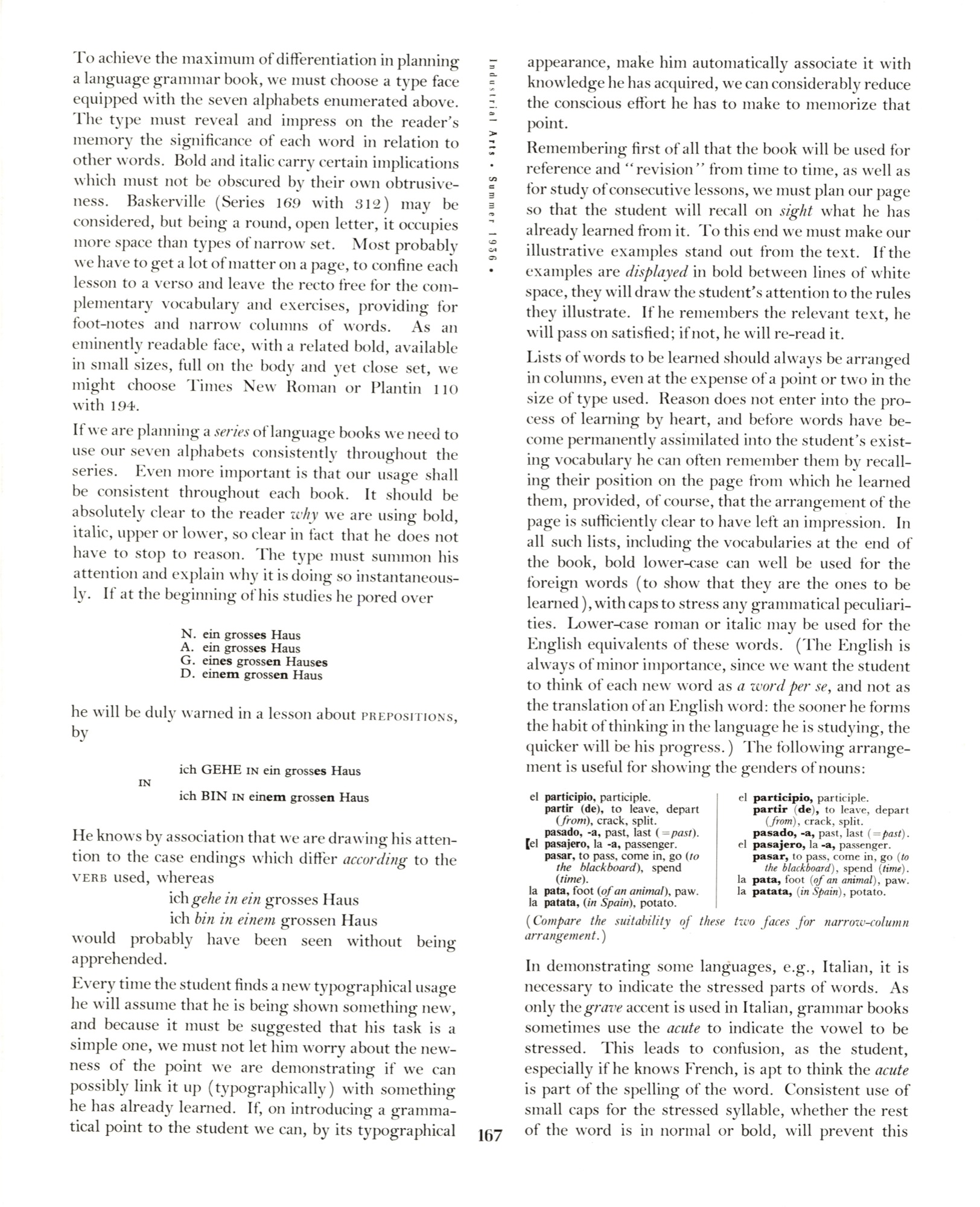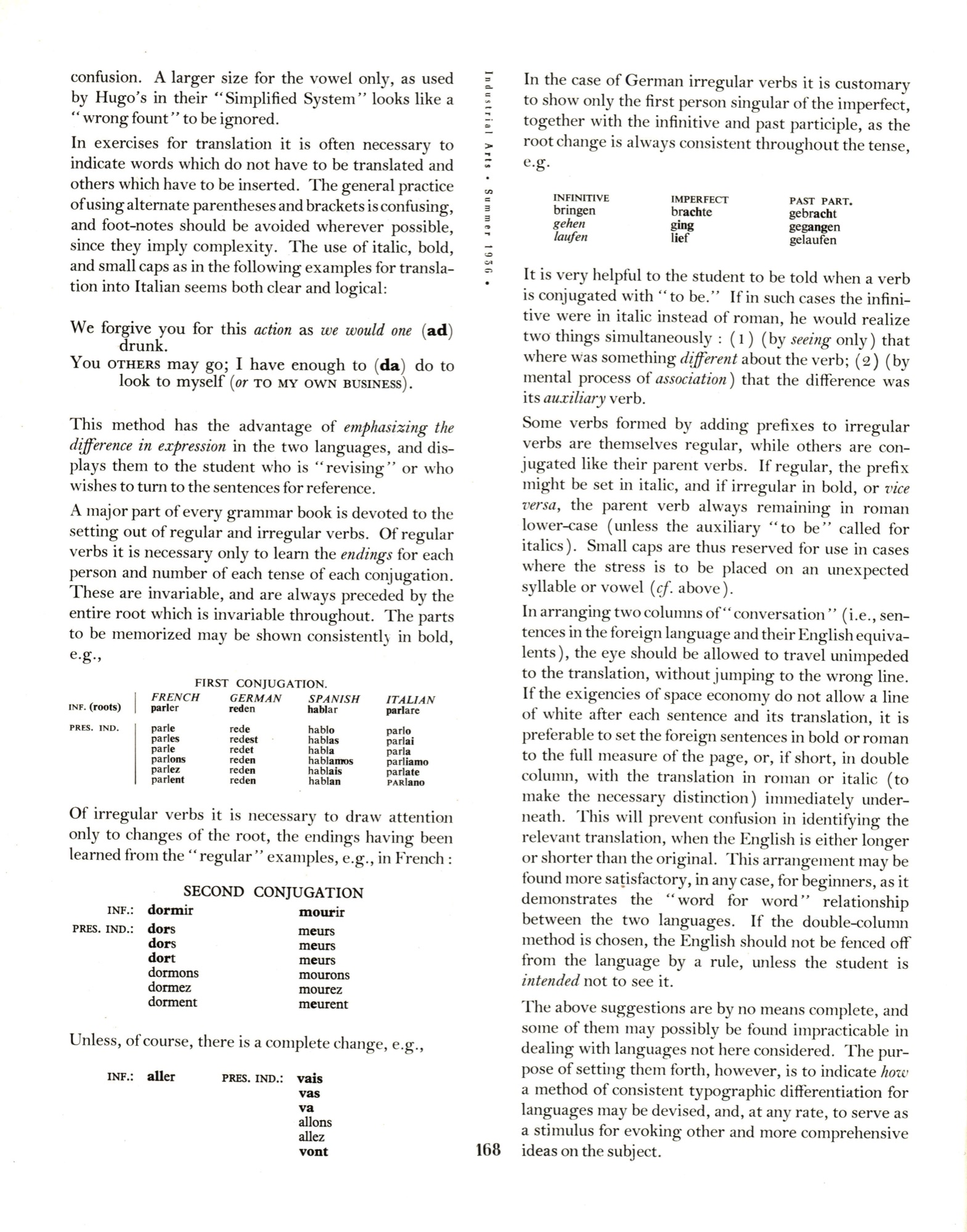2 of
You are browsing the full text of the article: Typography, Teacher of Languages
Click here to go back to the list of articles for
Issue:
Volume: 1 of Industrial Arts
| Industrial Arts Volume 1 Issue: 2 Summer 1936 Page: 165 | ||||||||||||||||||||||||||||||
| Typography, Teacher of Languages By Peggy Lang | ||||||||||||||||||||||||||||||
|

|
|
||||||||||||||||||||||||||||
| Industrial Arts Volume 1 Issue: 2 Summer 1936 Page: 166 | ||||||||||||||||||||||||||
| Typography, Teacher of Languages By Peggy Lang | ||||||||||||||||||||||||||
|

|
|
||||||||||||||||||||||||
| Industrial Arts Volume 1 Issue: 2 Summer 1936 Page: 167 | ||||||||||||||||||||||||||
| Typography, Teacher of Languages By Peggy Lang | ||||||||||||||||||||||||||
|

|
|
||||||||||||||||||||||||
| Industrial Arts Volume 1 Issue: 2 Summer 1936 Page: 168 | ||||||||||||||||||||||||||
| Typography, Teacher of Languages By Peggy Lang | ||||||||||||||||||||||||||
|

|
|
||||||||||||||||||||||||



